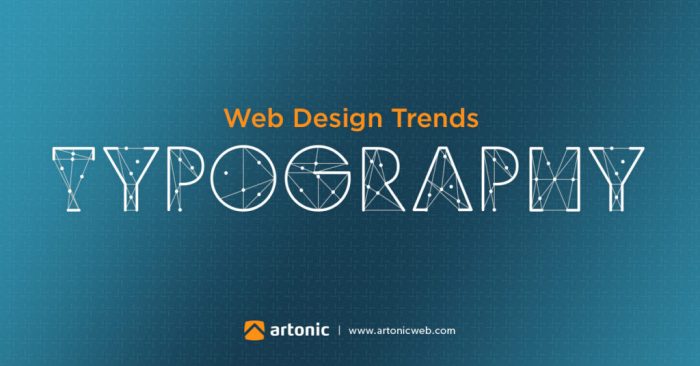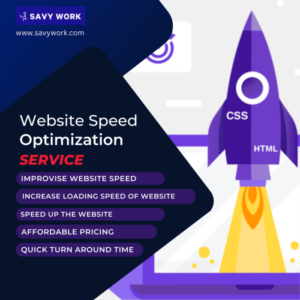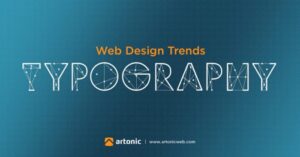
Typography trends in web design are more than just aesthetic choices; they form the backbone of user experience and brand identity. In a landscape where first impressions are made in seconds, the right typography can significantly enhance readability and engagement, guiding users through content with ease. As web design evolves, these trends reflect broader shifts in technology, culture, and user preferences, making it essential to stay updated on the latest styles and practices.
From the rise of bold, expressive fonts to the increasing importance of mobile-friendly design, understanding these trends is crucial for designers and brands alike. This overview will delve into the essential role typography plays in branding, user experience, and even , while also exploring how it integrates seamlessly with other design elements in the digital space.
Current Typography Trends in Web Design
The world of web design is continually evolving, and typography plays a significant role in shaping user experiences. Recent trends reflect a shift toward more expressive and visually appealing typefaces that enhance brand identity and communication. As designers seek to capture attention in a crowded digital landscape, they are increasingly experimenting with styles, sizes, and layouts that push the boundaries of traditional typography.One of the most notable trends is the rise of large, bold typography that commands attention.
This approach often utilizes oversized headlines or statement fonts that create a striking first impression. Another emerging style is the use of variable fonts, which allow for a range of weights and styles within a single font file, providing flexibility and diversity. Additionally, custom and hand-drawn typefaces are gaining traction, as they lend a unique personality to websites and help brands stand out.
Impact of Font Choices on User Engagement and Readability
Font selection is crucial as it directly influences user engagement and the overall readability of web content. A well-chosen font can enhance the aesthetic appeal of a website while ensuring clarity. When users encounter text that is easy to read, they are more likely to stay longer on the site and engage with the content.To illustrate the impact of font choices, consider the following factors:
- Readability: Fonts with clear letterforms and appropriate spacing improve the ease with which users can read text, especially on mobile devices.
- Emotional Response: Different font styles can evoke specific emotions—serif fonts often convey tradition and reliability, while sans-serif fonts are typically perceived as modern and clean.
- Brand Identity: Custom fonts can help establish a brand’s voice and personality, making it memorable in a competitive market.
The choice of typography ultimately shapes the user experience, steering how visitors perceive information and interact with the website.
Influence of Mobile-First Design on Typography Trends
With the increased usage of mobile devices, mobile-first design has become a guiding principle in web development, significantly influencing typography trends. Designers are now prioritizing font legibility on smaller screens, which often necessitates adjustments in size, weight, and spacing.Factors that influence typography decisions in mobile-first design include:
- Scalability: Fonts must scale effectively across devices without losing readability, which is vital for user retention and satisfaction.
- Touch Targets: Line heights and letter spacing are adjusted to ensure that text is not only readable but also easily selectable by users on touchscreens.
- Responsive Design: Typography must adapt fluidly within varying screen sizes, leading to the adoption of fluid typography that uses CSS techniques to enhance responsiveness.
As mobile continues to dominate web traffic, designers are compelled to adopt innovative typography strategies that cater specifically to mobile users, ensuring that content remains accessible and engaging.
The Role of Typography in Branding and Identity
Typography is not just about selecting fonts; it’s a powerful tool that shapes how a brand is perceived. The choices made in typography can convey emotions, communicate values, and create a distinctive identity. A well-chosen typeface can evoke trust, modernity, or playfulness, influencing consumer perception and engagement. Therefore, understanding the role of typography in branding is essential for any business looking to establish a strong presence.When brands choose specific typography, they are essentially crafting their identity and voice.
Typography can enhance recognition and memorability by aligning with the brand’s overall tone and message. For example, a luxury brand might use elegant serif fonts to convey sophistication, while a tech startup might opt for sleek sans-serif fonts to reflect modernity and innovation.
Impact of Typography on Brand Perception
The impact of typography on brand perception cannot be overstated. It extends beyond aesthetics into the realm of emotional responses and brand loyalty. Companies that consistently use typography to reflect their brand identity create a cohesive experience for their audience. The following points highlight how typography contributes to this perception:
-
The right typography fosters brand recognition.
Consumers are more likely to remember a brand when its typography is distinctive and consistent.
-
Typography communicates the brand’s personality.
Fun, quirky fonts can create a welcoming vibe, while classic fonts might evoke professionalism.
-
Alignment with target audience.
Typography that resonates with the target demographic can enhance relatability and engagement.
Examples of Effective Typography in Branding
Numerous brands effectively showcase the power of typography through their websites, creating a strong brand identity that resonates with users. Here are a few notable examples:
- Apple: With its clean, sans-serif fonts, Apple conveys simplicity and innovation. The consistency in typography across all platforms helps reinforce its brand message of modernity.
- Coca-Cola: The classic Spencerian script used in Coca-Cola branding evokes nostalgia and familiarity, making it one of the most recognizable logos worldwide.
- Google: The use of a simple, sans-serif font reflects accessibility and efficiency, aligning with its mission to organize the world’s information.
Importance of Consistency in Typography
Maintaining consistency in typography across different platforms and media is vital for establishing a unified brand identity. Inconsistent typography can lead to confusion and dilute brand recognition. Here are key reasons why consistency in typography is important:
-
Reinforcement of brand identity.
Consistent typography helps reinforce the brand’s image, making it easily recognizable across different channels.
-
Improved user experience.
Consistency in font usage enhances readability and user navigation, contributing to a positive user experience.
-
Building trust and credibility.
Brands that present themselves consistently appear more professional and reliable, fostering trust among consumers.
Integrating Typography with Other Web Design Elements
In the realm of web design, typography plays a crucial role that goes beyond simply conveying information. It interacts dynamically with other design elements, such as color schemes, layouts, and multimedia content, creating a cohesive aesthetic and functional experience for users. Understanding how to integrate typography effectively can enhance visual communication and strengthen overall design.The interplay between typography and other design elements is essential for crafting an engaging user experience.
Typography can complete a color scheme by providing contrast or harmony depending on the desired mood and message. When paired thoughtfully with images and multimedia, typography can guide users through content seamlessly. This integration requires careful attention to balance and proportion, ensuring that textual elements do not overpower or get overshadowed by visuals.
Complementing Color Schemes and Layouts
Color and typography must work in tandem to create a visually appealing design. A well-chosen color palette can enhance the legibility and impact of type, while typography can provide a visual hierarchy that complements the layout. Here are some guidelines to consider when integrating typography with color schemes and layouts:
Contrast
Use contrasting colors for text and background to enhance readability. For instance, light text on a dark background or vice versa can make the content stand out.
Harmony
Select typefaces that resonate with the color theme. Softer colors may pair well with rounded fonts, while bold colors can amplify the impact of sturdy, bold typefaces.
Hierarchy
Establish a clear hierarchy using size, weight, and color to differentiate between headings, subheadings, and body text. This creates an organized flow that guides the viewer’s eye through the page.
Balancing Typography with Images and Multimedia Content
When incorporating images and multimedia elements, typography must be balanced to ensure communication remains clear and effective. Here are key considerations for achieving this balance:
Alignment
Ensure text aligns harmoniously with images or multimedia for a polished look. This can mean adjusting margins and paddings so that text does not clash with visual content.
Size and Scale
Scale typography appropriately to maintain legibility in relation to images. For example, in a hero image, larger text can draw attention without being lost among visual elements.
Whitespace
Use whitespace strategically around text and images. This not only enhances readability but also allows for a cleaner design that prevents clutter.
Responsive Typography Techniques
With the increasing diversity of devices, responsive typography is paramount for delivering readable content across different screen sizes. Implementing responsive typography techniques ensures that text remains proportional and legible, regardless of device. Here are effective strategies to achieve responsive typography:
Fluid Typography
Utilize CSS techniques such as `vw` (viewport width) units to create text that scales fluidly with the browser window size. This ensures that typography adjusts in proportion to the user’s screen.
Media Queries
Implement media queries to adjust font sizes based on breakpoints. For example, increasing font size on larger screens while maintaining smaller sizes for mobile can enhance readability.
Viewport Units
Combine viewport units with traditional units (like `em` or `rem`) for a hybrid approach. This allows for flexibility and ensures that typography retains its intended visual hierarchy on any device.
Search Engine Marketing and Typography

Typography plays a crucial role in search engine marketing (SEM), influencing not just the aesthetic appeal of online advertisements and landing pages, but also their effectiveness. The way text is styled, sized, and arranged can significantly affect user interaction, especially click-through rates (CTR). This segment will explore how typography impacts SEM strategies and user engagement, offering insights into best practices.
Influence of Typography on Click-Through Rates
The choice of typography can directly affect how users perceive and interact with ads and websites. Research indicates that the readability and visual hierarchy of text can lead to increased click-through rates. For instance, using clear, sans-serif fonts at legible sizes enhances readability, encouraging users to engage with the content. A study by the Nielsen Norman Group highlighted that users are more likely to click on ads that feature bold, straightforward typography compared to those with intricate, decorative fonts.
This is primarily because simple fonts foster trust and convey information quickly.
Typography and User Experience in SEM
The relationship between typography and user experience is fundamental in SEM. Clear and well-thought-out typography improves the overall usability of web pages, making it easier for users to navigate and find the information they need. A positive user experience can boost engagement, leading to higher conversion rates. For example, when typography is used effectively in ad copy, it can create a more inviting atmosphere, encouraging users to explore further.
Choosing appropriate font combinations that complement each other can also create a seamless visual flow, making the content more digestible.
Best Practices for Typography in Landing Pages
When it comes to designing landing pages for search engine marketing, applying best practices in typography is essential for maximizing effectiveness. Below are key considerations:
Readability
Use fonts that are easy to read across all devices. Sans-serif fonts generally perform better for web content.
Hierarchy
Establish a clear hierarchy with font sizes and weights. Headlines should be larger and bolder to grab attention, while body text should be smaller and lighter.
Contrast
Ensure there is a strong contrast between text and background colors to enhance legibility. Dark text on a light background, or vice versa, works best.
Whitespace
Utilize whitespace strategically to prevent clutter. This helps guide the user’s eye and keeps the focus on important content.
Consistency
Maintain consistent typography throughout the landing page to create a cohesive look and feel. This builds brand identity and user trust.Implementing these practices not only enhances the visual appeal of landing pages but also contributes to better performance in search engine marketing campaigns. With an effective typography strategy, marketers can significantly increase engagement and conversion rates, leading to successful SEM outcomes.
Securing Your Web Design
In an era where online interactions are prevalent, the security of a website extends beyond technical measures; it also encompasses its design elements, particularly typography. The font choices, spacing, and overall text presentation can significantly impact how users perceive a website’s reliability and security. This makes typography a crucial component in creating a trustworthy web environment.Typography can instill confidence or cause doubt in a visitor’s mind.
Websites that employ clear, professional fonts are often perceived as more credible than those that use whimsical or overly decorative fonts. A well-structured typographic hierarchy aids in guiding users through content while reinforcing the brand’s identity and integrity.
Trustworthiness and Typography
The fonts used on a website play a pivotal role in its overall trustworthiness. Consistency, legibility, and alignment with the brand persona can greatly influence user perceptions. Here are some secure typography practices that enhance site trustworthiness:
- Consistent Font Usage: Utilizing a limited number of fonts throughout the website—typically one for headings and another for body text—ensures a cohesive look that can boost credibility.
- Legibility: Selecting fonts that are easy to read, especially for body text, prevents user frustration. Sans-serif fonts like Arial and Helvetica are often favored for their clarity.
- Proper Size and Spacing: Adequate font sizes and line spacing help in making content more digestible. A general rule is to keep body text at a minimum of 16px.
- Secure Font Hosting: Using well-known font hosting services that prioritize security reduces the risk of vulnerabilities. Services like Google Fonts or Adobe Fonts offer a wide range of secure typography options.
- Contrast and Color Choices: Ensuring high contrast between text and background not only aids readability but also caters to users with visual impairments, promoting an inclusive experience.
“Typography is the craft of endowing human language with a durable visual form.” – Hermann Zapf
Accessibility and Internet Security
Accessibility in typography is not just about visual appeal; it is essential for ensuring that all users, including those with disabilities, can access content securely. Poor typography can lead to misunderstandings or misinterpretations that could compromise user safety. The importance of accessible typography can be highlighted through the following points:
- Screen Reader Compatibility: Use fonts that are widely recognized by screen readers, allowing visually impaired users to navigate the site effectively.
- Semantic HTML: Employing proper HTML structure that conveys meaning and context aids both search engines and assistive technologies, bolstering site security by providing clearer content pathways.
- Focus on Color Contrast: Adhering to WCAG (Web Content Accessibility Guidelines) standards for color contrast helps ensure that text is readable against its background, reducing the likelihood of user error.
- Flexible Font Sizes: Allowing users to adjust font sizes through browser settings can enhance readability and accessibility, catering to users with different needs.
By integrating these typography practices into web design, creators can foster a sense of security and trustworthiness, ultimately contributing to a safer online experience for all users.
Enhancing with Typography Strategies
Typography plays a crucial role in web design, not just for aesthetics but also for search engine optimization (). The way text is presented can greatly influence user interaction, which in turn affects rankings. Effective typography enhances readability, encourages user engagement, and ultimately impacts the ability of search engines to crawl and index content effectively.The relationship between typography and on-page is significant because user interaction metrics, such as bounce rates and time spent on a page, can signal to search engines the value of that page.
A well-structured and visually appealing text encourages users to stay longer and engage more deeply with the content.
User Interaction and Typography
Understanding how typography affects user interaction is essential for enhancing . Here are several strategies to optimize typography for better search engine visibility:
- Readability and Legibility: Use font sizes, line heights, and contrast that make text easy to read. A font size of at least 16px is recommended for body text, ensuring that users can read comfortably on various devices.
- Hierarchy and Structure: Employ headings (H1, H2, H3) to create a clear content hierarchy. This not only helps users navigate but also allows search engines to understand the importance of different sections of the content.
- Responsive Typography: Ensure your typography scales appropriately on different devices. Using relative units like ems or percentages instead of fixed units helps maintain readability across screens.
- Consistent Font Choices: Limit the number of different fonts to maintain a cohesive appearance. Consistency in typography enhances user experience and keeps the focus on the content itself.
Common Typography Mistakes Affecting
Certain typography choices can inadvertently harm efforts. Here are some common mistakes to avoid:
- Inaccessible Fonts: Using overly decorative or complex fonts can make text difficult to read, leading to high bounce rates.
- Neglecting Mobile Optimization: Failing to adjust typography for mobile can result in a poor user experience, adversely affecting .
- Overlooking Alt Text for Text Images: If text is embedded within images, it may not be indexed by search engines. Always use HTML text when possible or include descriptive alt text for images.
- Ignoring Color Contrast: Poor contrast between text and background can make content unreadable, causing users to leave the page quickly.
Effective typography not only enhances user experience but also significantly impacts search engine visibility by influencing user engagement metrics.
By strategically implementing these typography strategies, web designers can improve user interaction and enhance their site’s performance.
Site Promotion and Typography
Typography plays a crucial role in site promotion, acting as a visual voice that can capture attention and convey brand messages effectively. The significance of typography in promotional materials and advertisements cannot be overstated, as it influences how audiences perceive and engage with content. Well-chosen fonts and typographic styles can evoke emotions, enhance readability, and ultimately drive conversions.One of the most striking aspects of typography in site promotion is its application in social media promotions.
Effective typography not only enhances the aesthetic appeal of posts but also helps convey messages quickly and clearly, which is essential in a fast-scrolling environment. Brands that successfully utilize typography in their social media campaigns often see increased engagement rates and brand recognition.
Effective Typography in Social Media Promotions
In the realm of social media, typography must be legible and visually appealing within the constraints of various platforms. Here are some examples of how brands have effectively used typography in their promotions:
- Bold and Clear Headlines: Nike often employs bold, sans-serif fonts in their promotions that stand out against vibrant backgrounds, capturing immediate attention and conveying strength.
- Playful Typography: Coca-Cola’s use of its signature cursive font in social media ads evokes nostalgia and connects emotionally with its audience, enhancing brand loyalty.
- Dynamic Text Layouts: Spotify frequently uses dynamic text layouts that align with their branding, creating eye-catching posts that encourage followers to engage with their playlists.
The choice of typography can significantly enhance the effectiveness of email marketing campaigns as well. An eye-catching yet readable font selection can improve open and click-through rates. The following guidelines can help ensure that typography is optimized for email marketing:
Guidelines for Typography in Email Marketing Campaigns
When crafting email campaigns, it’s vital to create a harmonious balance between aesthetics and functionality. Below are essential guidelines to follow:
- Use Web-Safe Fonts: Stick to web-safe fonts like Arial, Verdana, or Georgia to ensure compatibility across various email clients.
- Maintain Hierarchy: Establish a clear typographic hierarchy using different font sizes and weights to guide readers through the content effectively.
- Limit Font Variety: Use a maximum of two to three fonts to maintain a cohesive look and feel throughout the email.
- Consider Readability: Ensure that font sizes are legible on both desktop and mobile devices; a minimum of 14px for body text is recommended.
- Color Contrast: Choose colors that contrast well with the background to enhance readability and draw attention to key messages or calls to action.
Effective typography is not just about choosing a font; it’s about creating a cohesive visual language that resonates with your audience and reinforces your brand identity.
Social Media and Typography Trends
Typography is a key player in the vast landscape of social media, where the visual representation of text can significantly influence branding and user engagement. As trends continually evolve, each platform brings its unique typography styles, impacting how brands communicate with their audiences. Understanding these trends can help brands optimize their messaging and improve their presence across various channels.Different social media platforms exhibit distinct typography trends that cater to their specific user demographics and content styles.
For instance, Instagram often favors bold, creative fonts that stand out in a highly visual feed, while Twitter may lean towards clear, legible typefaces that are easy to read in quick succession. These variations highlight how typography can be tailored to enhance user experience and align with platform characteristics.
Typography Variations Across Social Media Platforms
Typography choices can greatly influence the effectiveness of social media posts. Below are notable typography trends across some major platforms:
- Instagram: On Instagram, brands like Nike and Coca-Cola frequently use bold, sans-serif fonts in a contemporary style. This allows their visuals to pop and helps in creating a recognizable brand identity amidst a sea of images.
- Facebook: Facebook often embraces traditional fonts such as Helvetica and Arial, which deliver clear messaging. Brands like Airbnb utilize these fonts to maintain a sense of familiarity and trust among users.
- Twitter: With its character limit, Twitter favors concise messaging with easily readable fonts like Roboto and Open Sans. The simplicity in typography helps in conveying messages quickly and effectively, as seen in brands like Wendy’s, which often uses witty and engaging text.
- Pinterest: Pinterest leans towards artistic fonts that resonate with its DIY and creative audience. Brands like Anthropologie often employ script fonts and playful typography to reflect their brand ethos and attract their target audience.
The choice of typography not only defines the aesthetic of a brand but also plays a crucial role in enhancing the shareability and engagement of social media content.
Impact of Typography on Shareability and Engagement
Effective typography can enhance how content is perceived and shared. Engaging typography captures attention and encourages interaction. Several factors contribute to this:
- Readability: Clear and legible fonts improve the chances of content being shared. For example, posts with easy-to-read typography tend to have higher engagement rates, as users can quickly absorb the information.
- Brand Recognition: Unique typography styles help in establishing a brand’s identity. Brands like Disney utilize their iconic font to boost recognition and recall, ensuring that their posts stand out in crowded feeds.
- Emotional Connection: The right typography can evoke emotions, influencing how users respond. For example, more whimsical fonts can create a light-hearted feel, encouraging shares among friends for fun or humorous content.
- Consistency: Utilizing consistent typography across social media platforms fosters brand cohesion. This strategy is exemplified by companies like Starbucks, which methodically employs its signature font across various platforms to maintain a unified brand image.
In conclusion, the impact of typography on social media is profound. Brands that effectively leverage typography not only enhance their visual appeal but also improve engagement and shareability, leading to a stronger online presence.
Video Marketing and Typography

Typography plays a pivotal role in video marketing, serving as a visual language that enhances the storytelling and impacts viewer engagement. The choice of font, size, color, and placement can significantly affect how messages are perceived. In an era where attention spans are limited, effective typography can ensure that key messages are communicated swiftly and memorably.Typography in video content acts as both a visual cue and a means of conveying emotions.
It helps in establishing tone, mood, and brand identity, adding layers of meaning to the visual narrative. The integration of typography within video marketing strategies can amplify the intended message and create a more immersive experience for the audience.
Integrating Typography into Video Marketing Strategies
Incorporating typography effectively into video marketing involves several techniques that enhance clarity and engagement. The following points highlight essential strategies for integrating typography seamlessly into video content:
- Consistent Branding: Ensure that your typography aligns with your brand’s identity. Using a consistent font style across all videos reinforces brand recognition.
- Clear Hierarchy: Utilize size, weight, and color contrast to create a visual hierarchy. This helps viewers easily identify key messages and information at a glance.
- Complementary Animation: Use dynamic text movement or subtle animations to draw attention to important points without being distracting.
- Contextual Relevance: Match the typography style to the video’s theme or subject matter. For example, a playful font may suit a light-hearted video, whereas a bold sans-serif can convey seriousness.
- Timing and Timing: Sync text appearances with key moments in the video. This enhances retention and ensures that the audience absorbs the essential information.
Best Practices for Legibility and Aesthetics in Video Typography
Creating legible and aesthetically pleasing typography is crucial in video marketing. Consider the following best practices to ensure your typography stands out while remaining easy to read:
- Font Selection: Choose fonts that are simple and easy to read on various screen sizes. Avoid overly decorative fonts that may hinder readability.
- Color Contrast: Ensure sufficient contrast between text and background. Dark text on a light background or vice versa is generally more legible.
- Text Size: Use large enough font sizes to promote readability, especially on mobile devices where screen size is limited.
- Limited Text Blocks: Keep text overlays to a minimum. Short, impactful phrases are more memorable than long sentences.
- Spacing and Alignment: Maintain optimal spacing between letters and lines for clarity. Proper alignment can also enhance visual appeal.
“Effective typography in video marketing does not overwhelm the viewer; instead, it guides them through the narrative, enriching their experience.”
The Future of Typography in Web Development
As technology continues to advance, the landscape of typography in web design is evolving at a rapid pace. New tools and methodologies are not only transforming how designers approach type but also how users interact with textual content on the web. This section explores the emerging technologies and trends that will shape the future of typography in web development, along with predictions on how these changes will align with shifting user preferences.
Emerging Technologies Influencing Typography
Advancements in technology are paving the way for innovative typography solutions in web design. The following technologies are predicted to have a significant impact:
- Variable Fonts: These fonts allow for multiple styles to be contained within a single font file, offering flexibility and improved performance. Designers can adjust weight, width, and slant parameters, enabling more dynamic text manipulation.
- WebAssembly: This technology allows for more complex typography rendering in browsers. With WebAssembly, designers can implement unique typographic effects and animations that were previously limited by JavaScript performance.
- Artificial Intelligence: AI tools are beginning to assist designers in selecting typefaces that best match their content and audience. These algorithms analyze user data and preferences, allowing for more personalized typography choices.
- Responsive Typography: As devices become more varied in screen size and resolution, typography must adapt seamlessly. Responsive typography techniques ensure that text remains legible and visually appealing across all devices.
Shaping Trends in Typography
The evolution of web typography will be influenced by several trends that reflect the changing landscape of digital content consumption. Key trends include:
- Minimalism and Simplicity: A growing preference for clean, straightforward designs is leading to a rise in minimalist typography. This style emphasizes clarity and readability, making it easier for users to absorb information quickly.
- Bold Typography: Designers are increasingly using oversized, bold typefaces to create impactful messages. This trend helps draw attention to key content, particularly in a world where users often skim through text.
- Custom and Unique Fonts: The use of custom fonts that reflect brand identity is becoming more common. Brands are seeking to differentiate themselves through exclusive typefaces that resonate with their target audiences.
- Enhanced Readability: With a focus on user experience, there is a continuous push to improve readability through proper spacing, contrast, and font selection. This trend is especially crucial for content-heavy websites and applications.
Predictions on Typography Evolutions
Looking ahead, typography in web development is expected to evolve significantly in response to user preferences and technological advancements.
- Integration of Augmented Reality (AR): As AR technologies rise, typography will likely take on new forms in immersive environments, where text can interact with users in three-dimensional spaces.
- Increased Focus on Accessibility: Future typography will prioritize accessibility, ensuring that text is not only visually appealing but also usable for individuals with varying disabilities. This may include adjustable text sizes and colors to cater to diverse needs.
- Dynamic Content Adaptation: Typography will increasingly adapt in real-time to user behavior, changing font styles and sizes based on engagement metrics and preferences to enhance user experience.
- Environmental Responsiveness: As the demand for sustainable design practices grows, typography will shift towards eco-friendly choices, such as using digital typefaces that minimize energy consumption during rendering.
The future of typography in web development hinges on the interplay between technology and user experience, making it a vital aspect of modern web design.
Ending Remarks
In conclusion, typography trends in web design are pivotal for creating engaging and effective online experiences. By carefully selecting fonts and maintaining consistency across platforms, brands can significantly enhance their identity and user interaction. As we move forward, keeping an eye on emerging technologies and changing user preferences will be key to leveraging typography’s full potential in web design, ensuring that it remains both relevant and impactful in the digital landscape.
Commonly Asked Questions
What is the importance of typography in web design?
Typography is vital as it enhances readability, establishes brand identity, and impacts user engagement.
How can typography affect ?
Well-structured typography can improve user interaction rates, which can positively influence search engine rankings.
What are some common typography mistakes to avoid?
Avoid using too many font styles, neglecting mobile responsiveness, and prioritizing aesthetics over readability.
How does typography influence mobile-first design?
Typography must be legible on smaller screens, often requiring simpler font choices and scalable sizes.
What role does color play in typography?
Color complements typography by enhancing visibility and reinforcing brand identity, making careful selection crucial.





